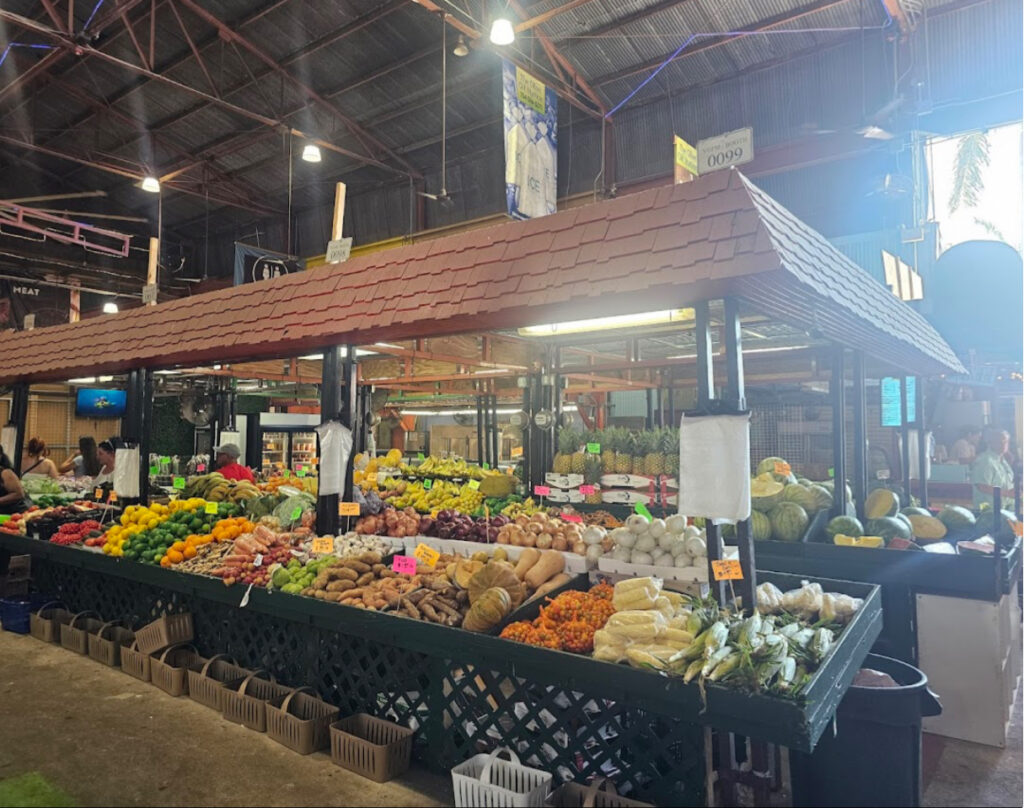Last Updated on 6 months
A Shopper’s Guide to Pesticides in Produce
Have you heard of the “Dirty Dozen”? Well, I hadn’t either until just recently.
The Dirty Dozen is the Environmental Working Group’s (EWG) analysis of the latest fruit and vegetable testing data from the Department of Agriculture and Food and Drug Administration. Their guide includes over 47,000 samples of 46 fruits and vegetables, and from these, they list the 12 fruits and vegetables that were most contaminated with pesticides.
Here’s The Dirty Dozen list for 2024:
- Strawberries
- Spinach
- Kale, collard & mustard greens
- Grapes
- Peaches
- Pears
- Nectarines
- Apples
- Bell & hot peppers
- Cherries
- Blueberries
- Green Beans

Who Are the EWG?
Established in 1993, the Environmental Working Group (EWG) is an American activist group specializing in research and advocacy on agricultural subsidies, toxic chemicals, drinking water pollutants, and corporate accountability.
The EWG Verified® mark on a product is often an indicator that a product meets EWG’s strictest criteria for transparency and health.
What Do the EWG Do?
Simply put, they act as watchdogs for harmful chemicals in products and food. The EWG team consists of scientists, policy experts, lawyers, communications, and data experts whose entire goal is to reform chemical safety and agricultural laws. Recently, Scott Faber, the EWG’s senior vice president for government affairs, stated:
Time and again the Food and Drug Administration has failed to take meaningful action to regulate potentially harmful food ingredients. In the absence of federal action, states have had no choice but to step up and protect their consumers. who also work to change outdated legislation to factor in the harmful potential of the way things are grown, made, and consumed.
What Does the Dirty Dozen Mean For Your Shopping?
It’s important to acknowledge that food deserts remain a significant issue in many underfunded, low-income, minority communities, even in the 2020s. However, if you can, here are some suggested ways to limit your exposure:
- Shop at local farmer’s markets for any of the items on the list. This is often a healthier and more cost-effective option than the big food chains.
- The shorter the time and distance from the farm to a sale, the higher the levels of vitamins and minerals. Farmers’ market or small, local stores often offer larger amounts of high quality produce at a much lower price because the food comes directly from their farm to your table.
- Worried that the excess product will spoil? No worries! You can bulk freeze, dry, can, or blend and freeze fruits and veggies in batches to keep them on hand.

The Good News
Avoid store-bought versions of anything on the Dirty Dozen list (when possible). These small, short-term decisions can lead to positive long-term results—remember, health is wealth!
If store-bought is your only option, then focus on thoroughly washing your produce.A mixture of baking soda and water works great.
Another option is to limit these high-pesticide items by choosing a replacement, like:
- Swap strawberries for raspberries
- Arugula instead of Spinach
- Nectarines in replace peaches
- Skip Pears for another potassium-rich item
- Mango or pineapple instead of apples
- Zucchini or acorn squash in place of peppers
- Skip the green beans and go snow peas or edamame
And the list goes on and on!
Now that you know the Dirty Dozen, don’t forget to check out the “Clean Fifteen” list—the fruits and vegetables with the fewest pesticide residues. You can find that list here.
Final Thoughts
While the Dirty Dozen might seem overwhelming at first, the good news is that you now have the knowledge to make more informed choices. Shopping locally, thoroughly washing your produce, and swapping out certain items for cleaner alternatives are simple steps you can take to reduce your exposure to pesticides.
Remember, fresh fruits and vegetables are still some of the best foods you can eat. Don’t let this list scare you away—just be mindful of where your produce comes from and how you handle it.
If you want to stay informed, keep an eye on the Environmental Working Group’s updates for more tips on safer shopping. These small changes in your routine can make a big difference in your health over time.
